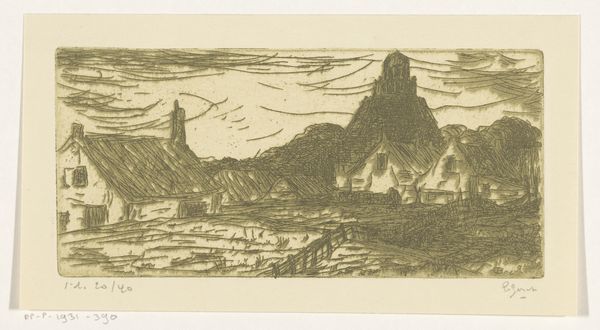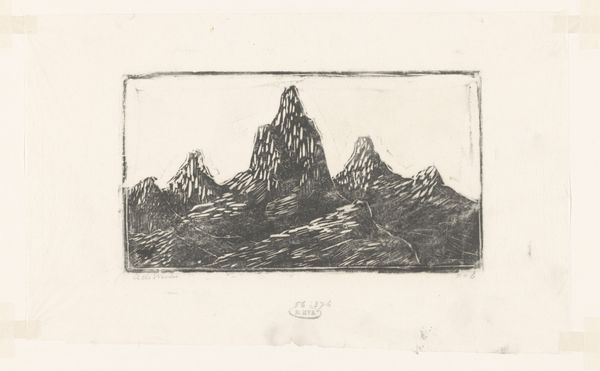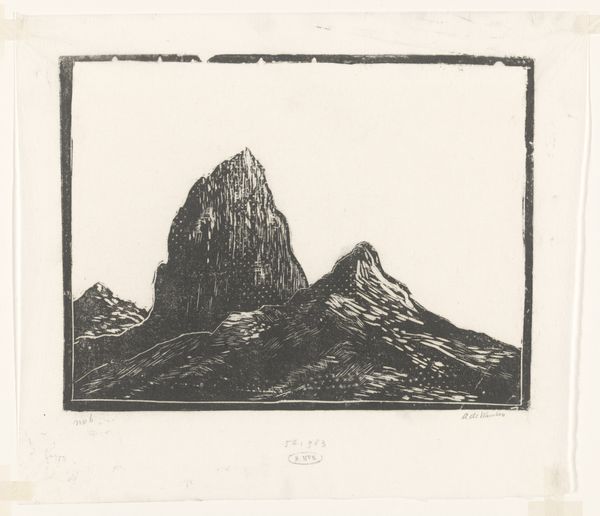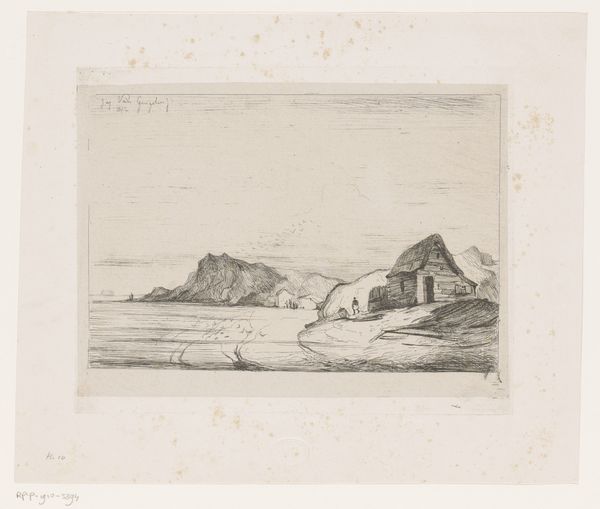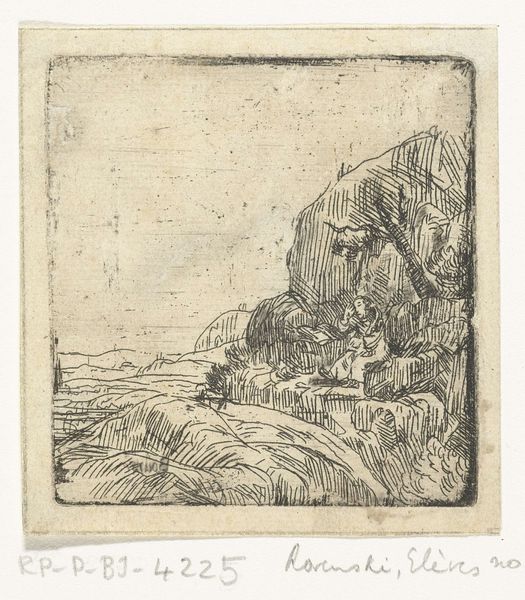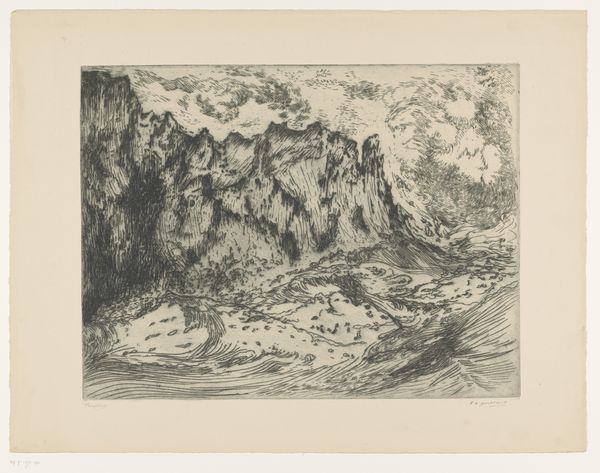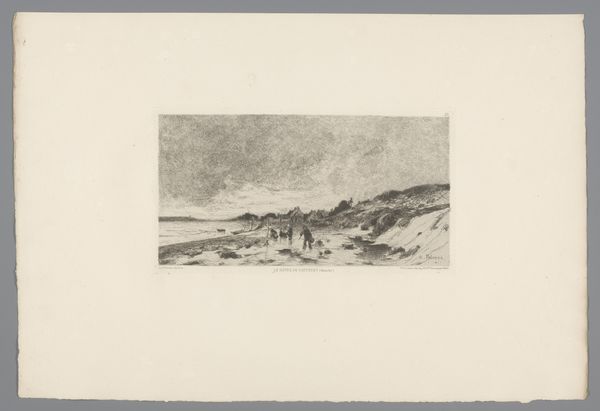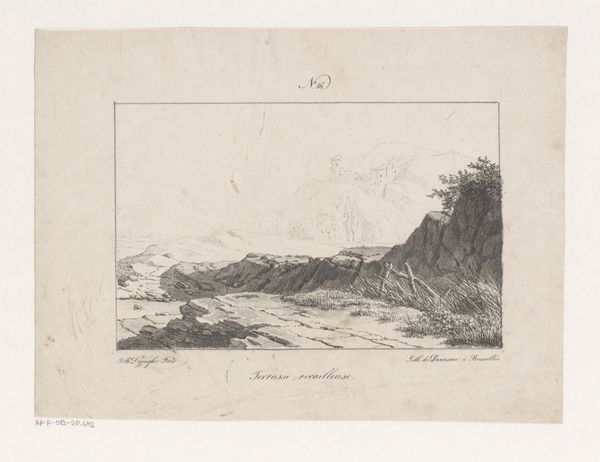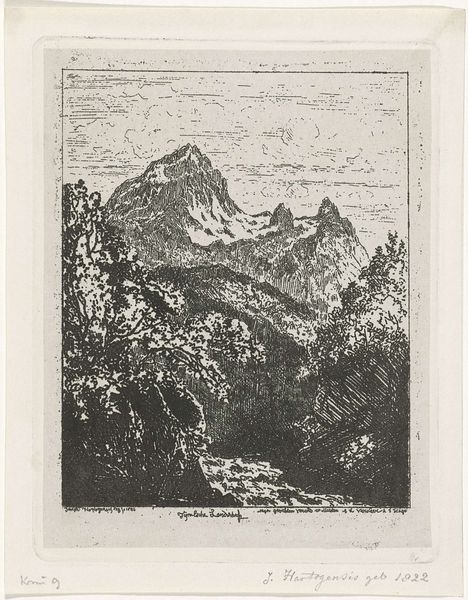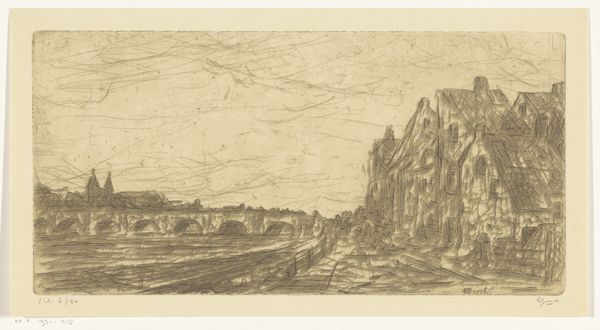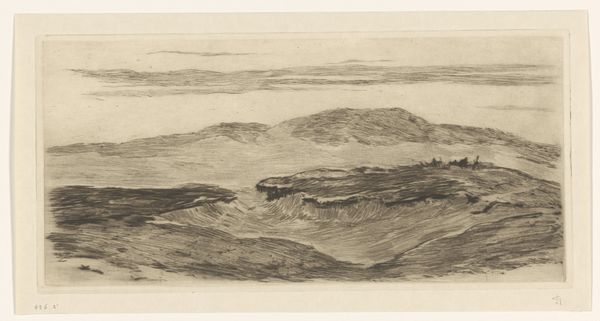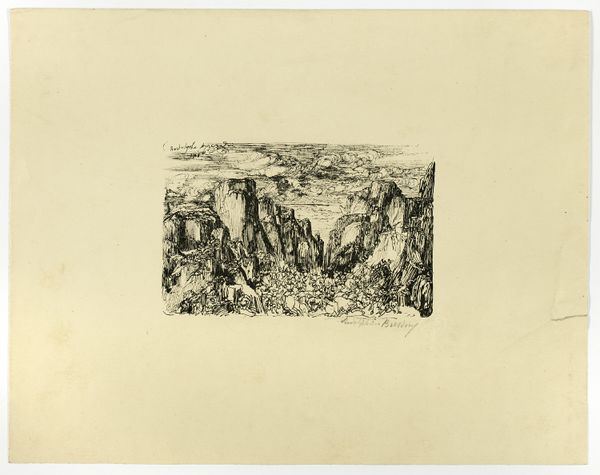
print, woodcut
# print
#
landscape
#
mountain
#
woodcut
Dimensions: height 153 mm, width 206 mm
Copyright: Rijks Museum: Open Domain
Curator: Well, this strikes me as a landscape charged with immense pressure – both geological and perhaps emotional. Editor: That's an interesting take. We’re looking at “Berglandschap,” or “Mountain Landscape,” a woodcut print created by Janus de Winter sometime between 1892 and 1951. The stark contrast and angular lines give it a dramatic, almost harsh feel. Curator: Exactly! Woodcut – such a demanding medium. You have to physically carve away at the wood, wrestling with the material itself to create the image. That process inherently lends itself to these bold lines and dramatic contrasts. There is labor evident. I bet de Winter employed specialized tools. Editor: The stark black and white adds to that drama, doesn’t it? I’m curious about its place in the broader landscape of printmaking at the time, and the institutions that either embraced it or shunned this kind of rugged style. Was this sort of imagery typically displayed in galleries? Curator: It depends, surely? Woodcut had a dual life – traditionally aligned with more populist and illustrative traditions while artists pushed it as a fine art medium. Its availability meant artists from various social strata could work with it. De Winter, though, was classically trained. How does his institutional position and experience in the print shop or studio play into this work? Editor: Precisely. The accessibility of the medium allowed it to become this widely accessible form of cultural and visual representation. I'm seeing both tradition and challenging of its form. There's definitely tension here—something more than just the sharp angles of the mountain range. Curator: Absolutely, and this affects who had the privilege to depict landscapes, and whose vision shaped our understanding of these spaces. What sort of political narrative might be folded within that jagged mountain range and stark horizon? Is it celebrating the untamed, critiquing human impact, or both? The scale gives it an intimacy, demanding a close look. Editor: An excellent point. I feel like understanding where this piece was exhibited, and what audience it aimed to reach would enhance the context we now see. The historical position can't be dismissed. Curator: Considering it that way opens up a richer view on this small woodcut and expands our view of landscape, materiality, and how art can communicate social realities. Editor: Indeed. And on the enduring power of imagery.
Comments
No comments
Be the first to comment and join the conversation on the ultimate creative platform.
